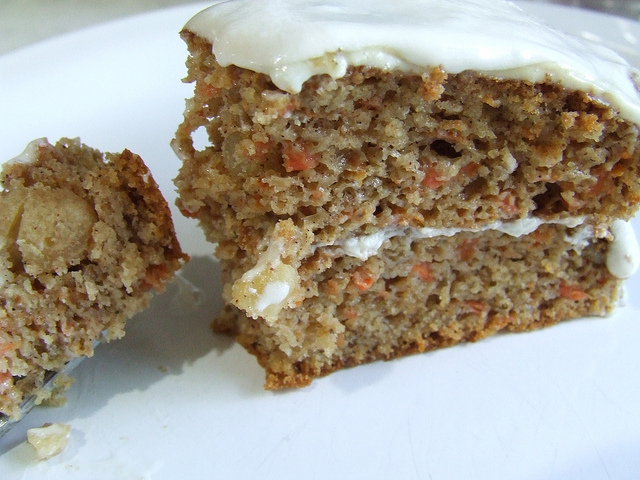Gluten sensitivity is quickly becoming a major problem. The gluten-containing wheat of today is vastly different than what your grandparents grew up eating. Today’s wheat has been so genetically modified, in my previous articles I have referred to it as Frankenwheat.
Similar to celiac disease, gluten sensitivity is estimated to affect about 18 million people in the United States. Those are the ones we know about. There’s also an extremely large amount of individuals suffering from gluten sensitivity that have not been properly diagnosed. Most physicians are familiar with some of the symptoms associated with gluten sensitivity or celiac disease, but the non-digestive symptoms that occur can often be difficult to diagnose.
Sensitivity to gluten ranges from those who can eat it just fine, to the other end of the spectrum where it causes celiac disease. Most folks fall somewhere in between. Based on testing I have done on patients in my integrative medical practice, I would estimate that at least 90 percent of us have some level of gluten sensitivity.
According to a study published in the New England Journal of Medicine, most individuals with gluten sensitivity actually have no digestive symptoms at all, yet it can still be linked to 55 chronic diseases or symptoms. Gluten sensitivity is a condition with symptoms similar to celiac disease that improve when gluten is eliminated from the diet. Symptoms that individuals suffering from gluten sensitivity include (but are not limited to):
- Foggy mind
- Depression
- ADHD-like behavior
- Abdominal pain
- Bloating
- Diarrhea
- Constipation
- Headaches
- Bone or join pain
- Chronic fatigue
- Skin rashes
Typical Symptoms Associated
Migraines and headaches are common symptoms in food sensitivities. According to a recent study performed by the American Headache Society, 56% of subjects who were diagnosed with gluten sensitivity reported chronic headaches, and 30% of subjects diagnosed with celiac disease reported the same. Another common symptom is “brain fog” which is caused by glutemorphines found in gluten that act like morphine and cause people to become disoriented or foggy. Gluten has also been known to attack the brain causing inflammation, which can lead to similar foggy symptoms.
Depression is one of the other main components that can be caused by gluten sensitivity. Due to gluten causing problems with digestion, the ability of the intestines to absorb nutrients and vitamins that help mood and brain health is limited. Nutrients such as B vitamins, iron, vitamin D3, omega 3 fatty acids, and zinc, if not properly absorbed at the optimal levels, can cause disruption of brain activity, thus affecting mood and overall brain health.
Inflammation is another major symptom that can cause skin rashes, joint, and muscle pain in the body. Outward manifestations such as skin rashes are often an implication of a deeper problem that is occurring within the body such as damage to joints, brain, or the digestive system.
Testing for Gluten Sensitivity
There are two ways available to test for gluten sensitivity. It’s important not to self diagnose. If you think you have celiac disease or gluten sensitivity, you should speak with your doctor and begin testing before you start a gluten-free diet. The first test performed is a blood test (this tests only for celiac disease), but unfortunately many doctors have not adopted the testing for gluten sensitivity… only for celiac disease. An important reminder: everyone with celiac disease is gluten sensitive, but not everyone with gluten sensitivity will develop celiac disease. Individuals suffering from gluten sensitivity may never test positive for celiac or wheat allergies on traditional lab or allergy testing and therefore it may be necessary to find a functional or integrative medicine physician to further investigate this issue with you.
Another option is to purchase a test I recommend from Direct Labs. The Alcat Comprehensive Wellness 1-Kit covers over 200 different food allergies, 10 food additive allergies, 10 food color allergies, and 20 different mold allergies! This test is used to discover delayed sensitivities, and is quite different than traditional testing. By testing for delayed sensitivities, you will discover that what you are exposed to on a given day may not affect you until three to four days later. Without delayed sensitivity testing it can be a challenge to “connect the dots” if what you ate on Monday does not affect you until Thursday.
Another way to test for gluten sensitivity is to (under consultation with your physician) remove gluten from your diet completely for about a four-week period. Keep a food journal of all the foods you eat and how you feel each day. If you feel better without gluten or worse when you add it back in, then you likely do have gluten sensitivity. Going gluten-free is the only treatment option for individuals with gluten sensitivity, as currently there is no known cure.
Don’t worry though, a gluten-free diet will not cause you to miss out on vital nutrients! Many resources are available to keep your diet both gluten-free and healthy. Gluten actually causes damage to the gut and affects the immune system drastically, which can lead to effects lasting three to six months after a gluten-free diet is adopted.
Test Positive? Here’s How to Change Your Diet
For those individuals that must adopt a gluten-free diet, all products containing wheat, barley or rye must be eliminated. This can be extremely challenging as most everyone enjoys bread, pasta, and other grain products. Avoiding products with gluten takes a very strict following. Reading labels vigilantly is a key component to success. Some people think “okay, I can’t have bread anymore,” but don’t understand that there are many other foods that contain gluten, which might not be common sense. It can be important, especially for those individuals feeling deprived of their typical favorite foods, to simply focus on the great foods you CAN eat. This list, borrowed from the Mayo Clinic, is vast and includes the following:
- Beans, seeds, and nuts (in natural, unprocessed form)
- Fresh eggs
- Fresh meats, fish and poultry (not breaded, battered, or marinated)
- Fruits and Vegetables
- Most Dairy Products
Many types of grains can also be included in a gluten-free diet. Most importantly, ensure that the foods you eat are not processed, or mixed with gluten-containing grains, additives, or preservatives. Grains and starches that you are allowed to add to the gluten-free diet include:
- Amaranth
- Arrowroot
- Buckwheat
- Corn and cornmeal
- Flax
- Gluten-free flours (rice, soy, corn, potato, bean)
- Hominy (corn)
- Millet
- Quinoa
- Rice
- Sorghum
- Soy
- Tapioca
- Teff
Reading labels can become one of the most empowering tasks, leading to the success of your gluten-free diet change. Make sure to avoid all gluten ingredients! Manufacturers can hide gluten in products by using gluten as binding, thickening, and coating agents. Frosting, ice cream, lunchmeat, and even imitation seafood can all contain gluten. Medications may also contain gluten in a binding agent or starch. When taking any vitamin, supplement, or medication, you should consult with your pharmacist to ensure you’re getting a gluten-free product. Other tricky ingredients might be misnamed or have numerous names on labels. Avoid wheat products named darum flour, farina, graham flour, kamut, semolina, and spelt.
Avoid These Ingredients in all Foods and Drinks
- Barley (malt, malt flavoring, and malt vinegar)
- Rye
- Triticale (mix between barely and rye)
- Wheat
As a general rule of thumb, also avoid the following foods; unless they are labeled as gluten-free or made with corn, rice, soy or other gluten-free grains:
- Beer
- Breads
- Cakes and pies
- Candies
- Cereals
- Cookies and crackers
- Croutons
- French fries
- Gravies
- Imitation meat or seafood
- Matzo
- Pastas
- Processed luncheon meats
- Salad dressings
- Sauces, including soy sauce
- Seasoned rice mixes
- Seasoned snack foods, such as potato and tortilla chips
- Self-basting poultry
- Soups and soup bases
- Vegetables in sauce
A vast selection of gluten-free products now exist, so you can still enjoy some of your favorite dishes by swapping out the gluten ingredients for others that are better suited. Health food stores and supermarkets across the globe now have entire sections containing gluten-free products. Rice, quinoa, millet and buckwheat are great side dish alternatives to pasta, rolls, or bread. Being creative and finding new gluten-free recipes to try can become a fun activity for the entire family as well! One thing to note, sometimes products without gluten may become cross-contaminated with gluten products and are able to still make you sick. This can happen during the manufacturing process, at home, in restaurants, or in school. Preparing meals on a common surface without cleaning properly to prepare gluten-free foods or even using the same toaster for regular bread and gluten-free bread are things to avoid. Take necessary steps to prevent this type of contamination at home and alert schoolteachers to your children’s gluten sensitivity as well.
Other Considerations
A gluten-free diet can help address many ailments and even behavioral issues in children and adults. Because gluten can contribute to malnutrition and deficiencies in nutrients and vitamins, it can also cause the body to react and behave differently due to this imbalance. According to key research done by Celiaccenter.org, biochemical imbalance in the brain as well as production of key neurotransmitters such as serotonin, dopamine, and noreprinephrine are associated with behavioral and emotional problems, which can be linked to gluten sensitivity. Many of these issues also can be linked to processed foods and sugars causing imbalances and spikes in certain chemicals, which lead to hypersensitivity, hyperactivity, and attention problems. Researchers in various European countries have done extensive studies on the effects of a gluten-free diet on ADHD symptoms and found strong connections. Compared to a standard diet, a specialized diet that eliminated gluten products, processed foods and sugars decreased symptoms drastically in individuals diagnosed with ADHD.
Consult Your Physician & Get Tested
Obviously there is much to be said about the overall benefits of a gluten-free diet. Gluten sensitivity is rapidly becoming an epidemic in America. By paying more attention to specific symptoms and getting tested for gluten sensitivity, more individuals will be properly diagnosed and treated. Simple changes and elimination of certain foods, especially those that are processed, can drastically increase the overall health and well being of you and your family. This is now easier than ever to implement!
I always recommend consulting a physician first if you’re concerned about symptoms believed to be associated with gluten sensitivity. But don’t be afraid to adopt the gluten-free lifestyle. It could be just the answer you’ve been waiting for to give you a healthier life!
For more reading on this topic, I recommend reading Grain Brain by my longtime colleague, Dr. David Perlmutter.
—
Photo credits:









